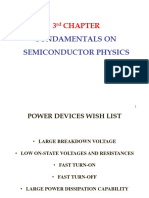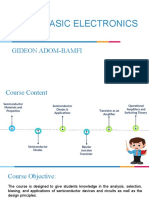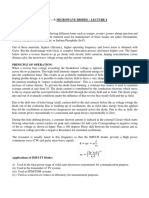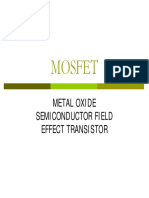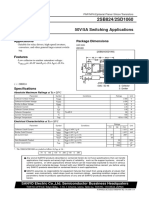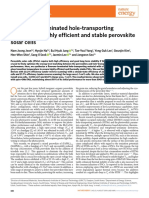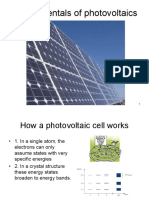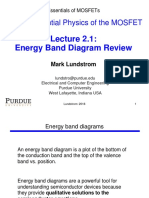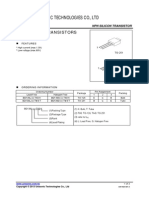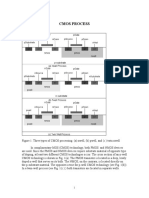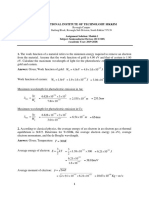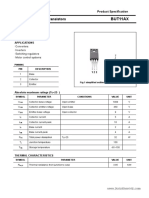0% found this document useful (0 votes)
138 views19 pagesSemiconductor Devices Overview
This document provides an introduction to electronic semiconductor devices. It discusses diodes, bipolar junction transistors (BJTs), and metal-oxide-semiconductor field-effect transistors (MOSFETs) as examples of key semiconductor devices. The objective of the course is to relate the terminal characteristics of these devices to their underlying material parameters and how ambient conditions like temperature and illumination can impact device operation. Topics that will be covered include carrier transport, PN junctions, excess carriers, device analysis procedures, and various transistor structures and applications.
Uploaded by
Akashnil RoyCopyright
© © All Rights Reserved
We take content rights seriously. If you suspect this is your content, claim it here.
Available Formats
Download as PPTX, PDF, TXT or read online on Scribd
0% found this document useful (0 votes)
138 views19 pagesSemiconductor Devices Overview
This document provides an introduction to electronic semiconductor devices. It discusses diodes, bipolar junction transistors (BJTs), and metal-oxide-semiconductor field-effect transistors (MOSFETs) as examples of key semiconductor devices. The objective of the course is to relate the terminal characteristics of these devices to their underlying material parameters and how ambient conditions like temperature and illumination can impact device operation. Topics that will be covered include carrier transport, PN junctions, excess carriers, device analysis procedures, and various transistor structures and applications.
Uploaded by
Akashnil RoyCopyright
© © All Rights Reserved
We take content rights seriously. If you suspect this is your content, claim it here.
Available Formats
Download as PPTX, PDF, TXT or read online on Scribd
/ 19




























